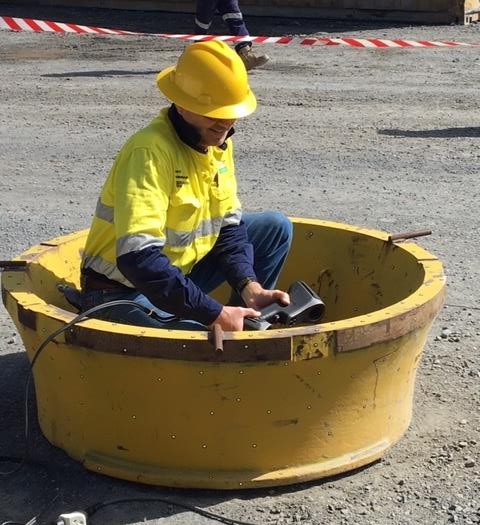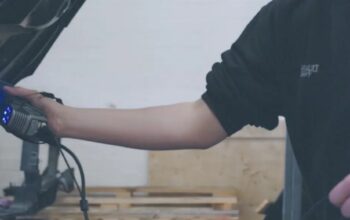Quality control is an indispensable part in the casting industry. The involvement of 3D measurement technology can help with the construction of mold, an inspection of work blank as well as other machining processes, shortening the processing time and improving efficiency.
Shortcomings of Traditional Method
Traditional measurement methods include ruler, layout machine and CMM.
Ruler: Commonly, rulers are unable to measure the irregular or massive casting, this method also costs lots of time and leads to a great deviation.
Layout Machine: Capable to measure only part of the casting, let alone curved surfaces and hidden faces. Besides that, more and more products provide 3D data instead of 2D drawing, setting a limitation to the layout machine.
CMM: Hard to measure huge objects and has a high cost.
Advantages of SCANTECH 3D Solution
Non-contact: SCANTECH 3D scanner adopts a non-contact 3D data collection system, which is able to obtain the 3D point cloud data in a short time. Compared with contact measurement, the non-contact measurement can acquire the data of dead angle, acquiring the complete data of complex casting.
Full Frame Scanning: Full-frame scanning can collect the point cloud data of the whole casting surface with high speed, assisting the deviation inspection of curved-surface casting.
Portable and Flexible: A handheld scanner can change the angle flexibly. It is also suitable for detecting narrow spaces and the inner feature of casting.
Allowance Inspection


This casting, which is 1000 mm in length and 800 mm in width, has structures of the deep cavity and thin walls. Our clients need to inspect the eligibility as well as allowance of it.
They adopted the PRINCE handheld 3D scanner, which can perform 3D scanning in 10 minutes without moving the casting to the measurement platform and any surface process. Data from scanning can be used to compare with CAD models and generate color maps as well as size inspection reports.
With respect to the inner cavity, which normally is difficult to detect, PRINCE can be put inside the cavity and obtain the inner 3D data thanks to its 315 × 165 × 105 mm size.
SCANTECH 3D scanning solution simplified regular measurement process, the scanning result can be imported to machine tools directly for programming, saving a lot of material cost as well as time cost.

3D Data

Color Map for Allowance Detection
Abrasion Detection

Our Australian client Boral Group needed to perform abrasion detection to the casting. For the massive size of the casting and outdoor operation under the sun, it posed great challenges to the accuracy, adaptability and portability of scanners.
SCANTECH provided AXE global 3D scanner to perform the task. AXE has a built-in photogrammetry system, which can eliminate accumulative error and improve accuracy greatly especially when scanning the large-scale workpiece.
Simultaneously, AXE has an accuracy of 0.020 mm, volume accuracy of 0.030 mm/m, and a scanning area of 860 mm × 600 mm. It can operate well under the sunlight so it is able to handle the requirement of clients.
The whole process of scanning takes around 10 minutes and does not need any detection platform. During the scanning process, angles and distances can be changed freely and the real-time data will be presented to generate 3D models.

3D Data


Color Map for Abrasion Detection
Having the features like portability, high-accuracy, instantaneity, 3D scanning has been a popular casting inspection method. SCANTECH has multiple 3D scanner product lines including KSCAN/AXE/TrackScan/PRINCE, clients can choose the most suitable product according to their personal requirement. Our products can help increase the accuracy and efficiency of inspection, refine the processing technique and enhance the quality of castings.









